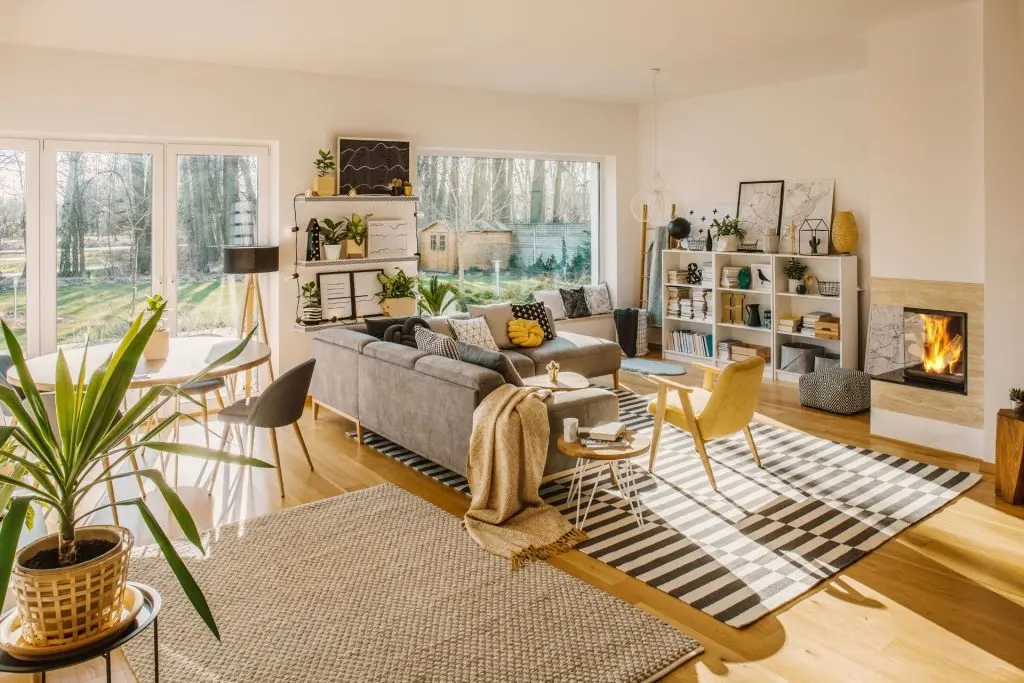Renovating a fixer-upper is necessary when you’re trying to increase the property’s value, but it’s crucial that you avoid making some of the most common renovation mistakes investors sometimes make. Despite having gone over the plans for your remodeling project numerous times, those costly mistakes could derail your project’s renovation timeline and eat away at your profits.
New Western’s Co-Founder and President, Kurt Carlton, has spent the past two decades rewriting the playbook on how to invest in real estate. With his insight and years of experience, we’ll share seven of the most common mistakes investors tend to make and how to avoid them.
Key Takeaways:
- Cost, quality, and architectural character should all be taken into account when remodeling.
- To meet the needs of the market, you should focus on its usefulness and aesthetic appeal.
- Choose contractors who have a history of being dependable and effective.
7 Common Renovation Mistakes Investors Should Avoid Making
1. Only Getting One Estimate and Being Overcharged
The most important thing to remember when doing renovations on an investment property is to not spend more money than you need to. One of the most common home renovation mistakes new investors make is accepting the first bid without comparing it against others. Not only do you run the risk of spending more than necessary for services and supplies, but you also risk cutting into your potential profit margins.
To avoid making this mistake, consider these steps:
- Get Multiple Bids: Getting bids from more than one contractor can help you get a better idea of how much the remodeling will cost overall.
- Comparison: Don’t just look at the bottom line; compare what’s included, the quality of the materials, and the schedules.
- Detailed Project Scope: Make it clear what the remodeling will include before you ask for bids.
- Consistency: To avoid problems, make sure that all potential contractors are bidding on the same topic.
- Potential Extras and Overheads: Make sure you know exactly what the price includes.
- Clarify: List any extra fees that might come up because of problems or changes that were not expected.
By asking for more than one plan, you maximize your negotiating power and make sure that your remodeling project budget is accurate.
Pro Tip: “Always solicit multiple bids (at least three) for any project to get a sense of the market rate. This not only helps in preventing overcharges but also provides options in terms of quality and timelines. Remember, due diligence in the bidding process is crucial for keeping your investment on track and within budget.” – Kurt Carlton
2. Choosing the Lowest Bid Without Due Diligence
It is tempting to look for ways to save money while investing in single-family homes. Though choosing the lowest bidder for the job might seem like a good idea at the time, you need to fully vet the contractor and prior work before making a decision.
Key considerations when reviewing bids:
- Background Check: Check the contractor’s licenses, certifications, referrals, and portfolio of past work.
- Examine Bids: Check to see if the bids provide the same supplies, labor, and deadlines.
- Specify: Make sure it’s clear how much each part of the job will cost.
- Comprehensive Analysis: Be wary of prices that are much lower than others. These things can mean that the contractor is trying to cut corners or hasn’t done their homework on the project’s scope.
- Risk of Low Bids: The cheapest contractor may leave out some hidden expenses, especially finishing details that turn out to cost you more than anticipated. These will drive up the final cost and sometimes take extra time to get the home move-in ready.
Don’t forget that your goal is to find a good mix between quality and price. You are more likely to be happy with the results of your investment property if the contractor’s bid shows that they are realistic about the cost of quality materials and work.
By taking the time to thoroughly investigate and analyze every bid, you can be confident that you are not risking the project’s success in order to take advantage of an apparent cost-saving measure.
3. Not Getting the Proper Permits
Permits play a critical role in the renovation process, especially when you are beginning the renovation process with the intention of renting or flipping the space. Not getting the right building permits can lead to potential problems that could cut into your budget.
Legal Implications of Not Obtaining Proper Permits:
- Fines: If municipal authorities discover unpermitted work, they may impose fines.
- Demolition: It may be necessary to demolish any unauthorized work that has been found.
- Legal concerns: You may face legal action if problems arise in the future as a result of the work that did not comply.
Proactive Steps:
- Research: Find out what kind of permits are required in your area before you start any project.
- Advice: Talk to your local building department about what permits you need.
- All-Inclusive Estimates: Check that your contractor has included the cost of permits in their estimate.
In addition to being another obstacle, unlicensed work is an all-too-common home remodeling mistake that can have unintended consequences.

4. Disregarding the Home’s Architectural Style
An important consideration when buying a fixer-upper is maintaining the integrity of the building’s original design. Ignoring this could lessen the property’s appeal and decrease its worth on the real estate market.
It can be difficult to strike a balance between updating and modernizing a property without sacrificing its original aesthetic and practicality in order to take full advantage of its potential. This is why hiring a professional designer could be a good idea for fixer-uppers that are more complicated.
Here are some easy examples:
- Craftsman/Bungalow: Keep the warm, natural materials and handcrafted simplicity.
- Victorian: Preserve ornate details and the historical character.
- Mid-Century Modern: Maintain the clean lines and open spaces.
Action Steps:
- Assess: Before purchasing a property, evaluate its architectural style and potential for updates that align with it.
- Plan: If remodeling is necessary, create a design that complements the home’s inherent style.
- Budgeting: While setting a realistic budget, include funds for materials and modifications that are consistent with the home’s era and design.
If you know about the building’s history, you can make remodeling plans that keep the property’s character and charm, which will help you get the best return on your investment.
5. Focusing on Aesthetics Rather Than Functionality
When renovating single-family homes, the desire for beautiful finishes can sometimes overpower the need for functionality. A good rule of thumb for investors is to make sure that the property not only looks good but also meets the needs of the people who will be living there.
Key Areas to Consider:
- Appliance Placement: Ensure easy access to kitchen appliances and logical workflow.
- Storage Solutions: Offer ample and convenient options for storage areas like closets and kitchen cabinets.
- Lighting: It must be functional and enhance the space. Overhead lighting, task lighting and ambient lighting should focus on its purpose.
Improvements that only make the property look better may not be as helpful as increasing its usefulness. A kitchen remodel, for instance, requires a balance of form and function. A stunning design is pointless if it lacks adequate storage or a functional layout.
Avoid Common Pitfalls:
- Putting useless design components ahead of storage space.
- Using materials that are aesthetically pleasing but unusable in daily life.
- Underestimating the value of well-designed traffic areas.
Every part of the property should have a function and contribute to the property’s livability and value if you want to attract buyers or tenants. Finding the right mix between style and function will not only make your investment more marketable, but it will also keep the property practical and visually appealing for a long time.
6. Customization According to Personal Tastes
Renovating investment properties requires careful consideration of both practicality and aesthetics. While customization is important, making the design too unique could make it harder to find people who’d want to buy or rent the property. Your objective as an investor should be to enable a sale or rental that is both profitable and done quickly.
- Refrain from niche designs: Stay away from styles that are too close to your own style. Instead, choose a more neutral color scheme that will appeal to more people.
- Focus on mass appeal: Usually, people like classic plans and neutral wall colors because they make it easier for buyers to picture themselves in the space, which makes it more marketable.
- Invest in timeless features: Some features, like stainless steel appliances, hardwood floors, and marble countertops, always seem to bring in buyers, no matter what the latest trend is.
- Research your market. Get to know your target audience’s tastes. Without limiting your property to a specific style, do the renovations so they match the preferences of most local buyers.
Remember that you should think about the possible return on investment (ROI) for every design choice you make. If you want to get the most money out of a sale or rental, your modifications should reflect current trends and market norms.
Pro Tip: “For renovations with an eye toward resale, opt for neutral, widely appealing design choices. This strategy ensures your property appeals to the largest possible audience, enhancing its marketability and resale value.” – Kurt Carlton
7. Overconfident About DIY Skills
You might think that doing the work yourself will save you on renovation costs. However, a lack of expertise and skill could lead to not only poor work but also additional cost. Here are some of the main reasons why real estate investors may overestimate their ability to do DIY renovations:
- Misjudging Project Difficulty: In many cases, the ins and outs of a renovation project contain hidden complications. You risk missing important details that experts have the ability to manage if you don’t have the right knowledge.
- Quality of Work: Expert contractors have honed their craft through years of education and experience, which shows in the finished product. You run the risk of lowering your property’s value due to faults caused by poorly done DIY projects.
- Time Management: Your time is valuable, and the deadlines for remodeling projects can be rather lengthy. Professional teams are more efficient, particularly when it comes to major renovation projects.
- Safety and Compliance: Avoid expensive legal consequences or risks to your investment by thoroughly researching and comprehending all local building laws and necessary permits.
Tips to Avoid the Overconfidence Trap:
- Assess Your Skills Realistically: Be honest with yourself about your capabilities and the complexity of the project.
- Consult Professionals: Even if you plan to do some work yourself, consult with contractors to understand the scope of the entire process.
- Understand the True Cost: Include the potential cost of fixing DIY mistakes in your renovation budget.
- Consider the ROI: Weigh the potential savings from DIY against the potential uptick in property value from professional work.
Pro Tip: “Realistically assess your skills and the scope of the project. When in doubt, hiring professionals can save time and money in the long run, ensuring a quality finish that adds value to the property.” – Kurt Carlton










